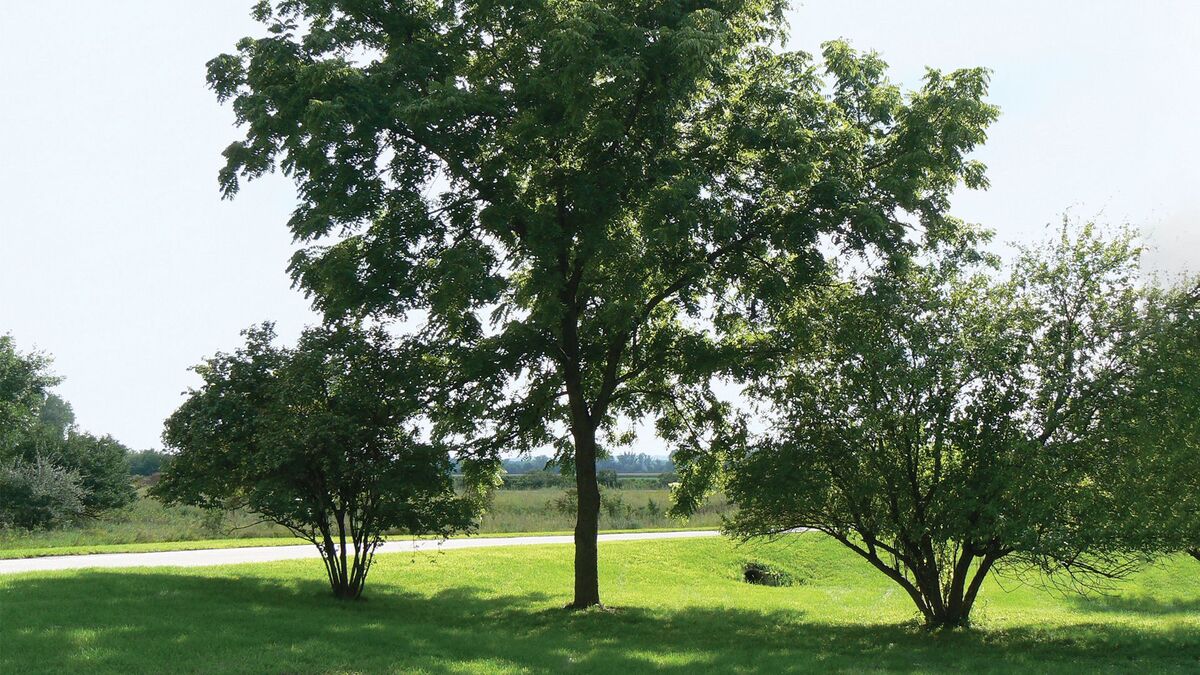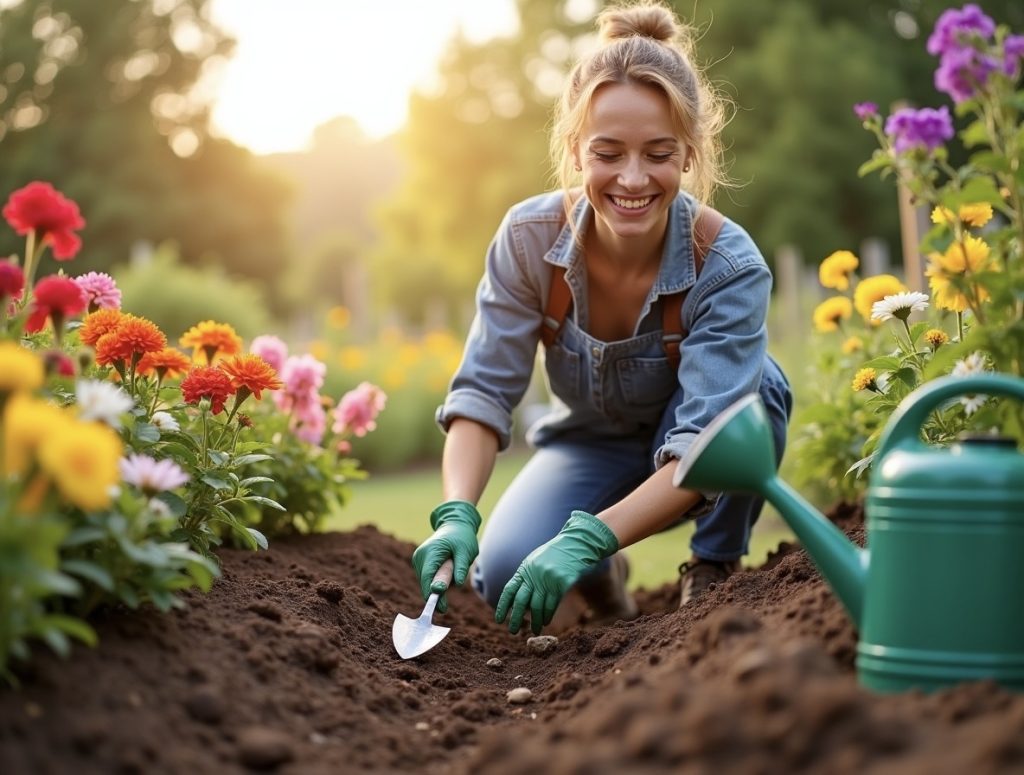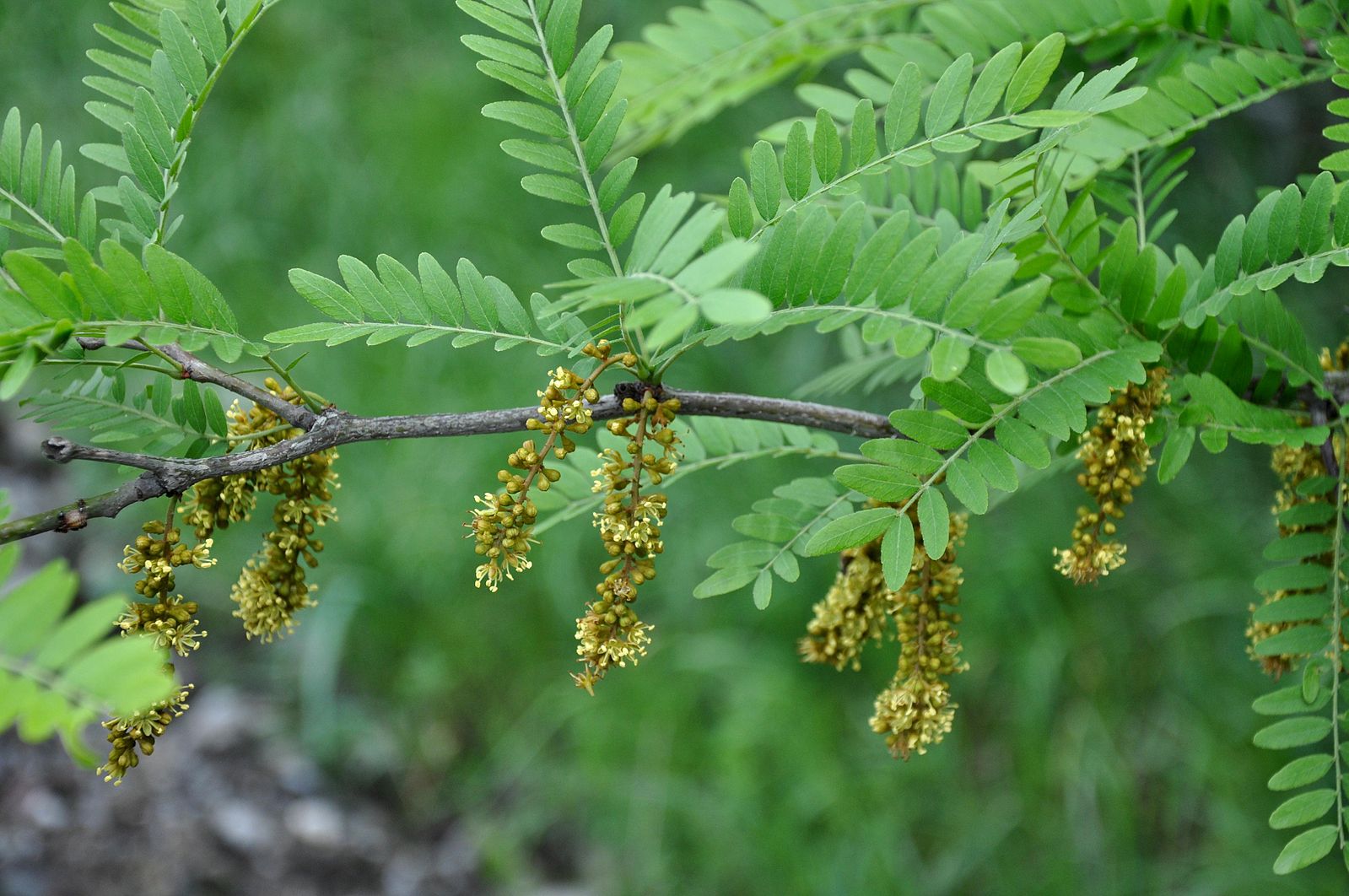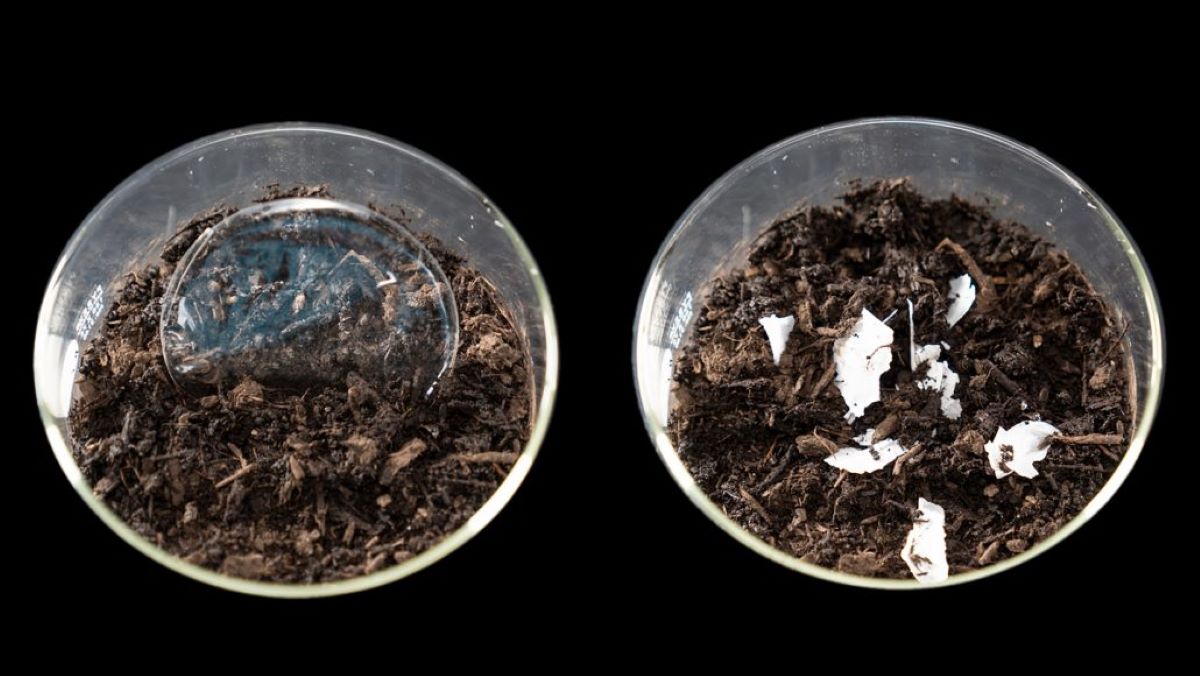Home>Gardening Tips and Tricks>Eco-Friendly Gardening>How To Compost Fast
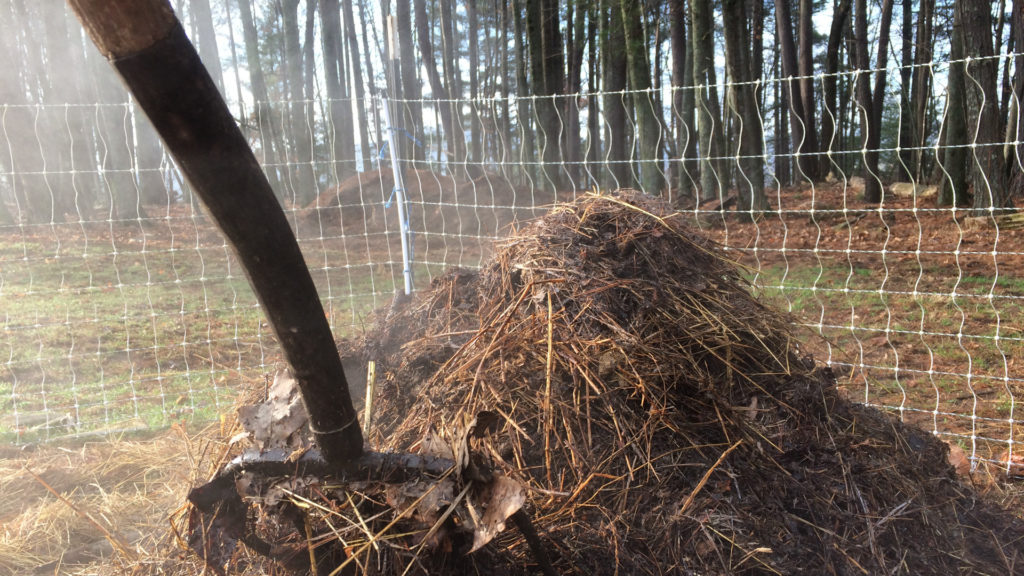

Eco-Friendly Gardening
How To Compost Fast
Modified: January 22, 2024
Learn the secrets to composting quickly for an eco-friendly garden. Discover effective tips and techniques for fast decomposition and nutrient-rich soil.
(Many of the links in this article redirect to a specific reviewed product. Your purchase of these products through affiliate links helps to generate commission for Chicagolandgardening.com, at no extra cost. Learn more)
Table of Contents
Introduction
Welcome to the world of eco-friendly gardening! If you’re passionate about sustainability and want to minimize your environmental impact, incorporating composting into your gardening routine is a fantastic way to do so. Composting is the process of decomposing organic materials such as kitchen scraps, yard waste, and other biodegradable materials into nutrient-rich compost. This compost can then be used as a natural fertilizer to nourish your plants, reduce the need for chemical fertilizers, and promote a healthy and vibrant garden.
Composting not only benefits your garden but also has a positive impact on the environment. By diverting waste from landfills, composting helps reduce greenhouse gas emissions and the production of methane gas, a potent greenhouse gas that contributes to climate change. Additionally, composting enriches the soil, improves its structure, and increases its water retention capacity, thus reducing the need for excessive watering.
Whether you’re a seasoned gardener or just starting your eco-friendly journey, this comprehensive guide will walk you through the process of composting and provide helpful tips to ensure your compost piles develop quickly and efficiently. By following the steps outlined in this guide, you’ll be on your way to creating nutrient-rich compost that will nourish your plants, reduce waste, and contribute to a healthier planet.
Before we delve into the specifics of composting, let’s take a closer look at the numerous benefits it offers and how it fits into an eco-friendly gardening approach.
Benefits of Composting
Composting offers a multitude of benefits for both your garden and the environment. Here are some of the key advantages of incorporating composting into your eco-friendly gardening practices:
- Enriches the Soil: Compost is rich in nutrients and organic matter, which improves soil fertility and enhances plant growth. It provides a slow-release source of essential nutrients, such as nitrogen, phosphorus, and potassium, that plants need for healthy development.
- Improves Soil Structure: Compost helps to improve soil structure by creating pore spaces, allowing for better aeration and drainage. This, in turn, promotes root growth and prevents soil erosion.
- Enhances Water Retention: The organic matter in compost acts like a sponge, absorbing and retaining water in the soil. This reduces water runoff, conserves water, and helps plants withstand drought conditions.
- Reduces Need for Chemical Fertilizers: By using compost as a natural fertilizer, you can reduce or eliminate the need for synthetic chemical fertilizers. This minimizes the risk of groundwater pollution and reduces chemical dependency in your garden.
- Diverts Organic Waste from Landfills: Composting diverts organic waste, such as fruit and vegetable scraps, coffee grounds, and yard trimmings, from ending up in landfills. As organic matter decomposes in landfills, it produces methane gas, a potent greenhouse gas. By composting, you contribute to reducing greenhouse gas emissions and combatting climate change.
- Promotes Biodiversity: Composting encourages the growth of beneficial microbes and organisms in the soil, contributing to a healthier and more diverse ecosystem. This, in turn, attracts beneficial insects, birds, and other wildlife to your garden, creating a balanced and thriving environment.
By embracing composting in your gardening practices, you can reap these benefits and create a sustainable and eco-friendly garden. Not only will your plants flourish, but you’ll also contribute to a healthier planet for future generations.
Choosing the Right Composting Method
When it comes to composting, there are several methods you can choose from, depending on your space, resources, and preferences. Here are some popular composting methods to consider:
- Backyard Composting: This is the most common and accessible method for home gardeners. Backyard composting involves creating a compost pile or using a compost bin in your yard. It requires a balance of brown (carbon-rich) and green (nitrogen-rich) materials, regular turning or mixing, and proper moisture levels. Backyard composting is ideal if you have ample space and access to yard waste and kitchen scraps.
- Vermicomposting: Vermicomposting utilizes worms to break down organic matter and produce nutrient-rich castings, also known as worm compost. Red worms, such as red wigglers, are commonly used for vermicomposting. A vermicomposting bin or worm composter is used to house the worms and organic waste. This method is ideal for those with limited outdoor space or who want to compost indoors.
- Bokashi Composting: Bokashi composting is a fermentation process that utilizes a special bokashi mix containing beneficial microorganisms to break down organic waste. This method is relatively quick and odorless, making it suitable for indoor composting. Bokashi bins are used to ferment the organic waste, and the resulting material can later be added to a traditional compost pile or buried in the garden.
- Trench Composting: Trench composting involves digging a trench in your garden, adding compostable materials, and covering them with soil. As the materials decompose, nutrients are gradually released into the surrounding soil. This method is particularly useful for fertilizing specific areas or preparing beds for planting.
- Compost Tumblers: Compost tumblers are enclosed bins that can be rotated or turned, providing a convenient and compact option for composting. These containers speed up the decomposition process due to the frequent mixing and aeration they provide. Compost tumblers are great for those with limited space, as they can be placed on a patio or balcony.
Consider the available space, time, and resources you have when choosing a composting method. Each method has its advantages and considerations, so select one that best fits your needs and gardening goals.
Remember, regardless of the composting method you choose, achieving the correct balance of carbon and nitrogen, maintaining proper moisture levels, and providing regular aeration are crucial for successful decomposition and the production of high-quality compost.
Gathering Composting Materials
Before you can begin the composting process, you’ll need to gather the necessary composting materials. These materials can be broadly categorized into two groups: carbon-rich (browns) and nitrogen-rich (greens). Achieving the right balance between these materials is essential for successful composting and the breakdown of organic matter. Here’s a breakdown of common composting materials:
Carbon-rich (Browns) Materials:
- Dead leaves
- Straw or hay
- Woody pruning from trees and shrubs
- Newspaper or cardboard (avoid glossy or colored paper)
- Shredded paper
- Wood chips or sawdust
- Twigs
Nitrogen-rich (Greens) Materials:
- Grass clippings
- Vegetable and fruit scraps
- Coffee grounds and filters
- Tea leaves and bags
- Green plant trimmings
- Manure (from herbivores)
- Seaweed
It’s important to note that some materials should be avoided in composting, as they can attract pests, introduce diseases, or disrupt the decomposition process. Avoid adding meat, dairy products, oily or greasy materials, bones, weeds with seeds, diseased plant material, or pet waste to your compost pile.
To ensure a good mix of carbon and nitrogen, aim for a ratio of roughly 3 parts carbon to 1 part nitrogen. This balance will help provide the necessary nutrients for the decomposers (such as bacteria and fungi) to efficiently break down the organic matter. You can adjust the ratio as needed during the composting process by adding more browns or greens.
Remember to gather a sufficient amount of composting materials to create a compost pile of substantial size. The larger the compost pile, the better it retains heat, which accelerates decomposition. Aim for a minimum pile size of 3 feet by 3 feet by 3 feet (1 cubic yard) for efficient composting.
By collecting a variety of carbon-rich and nitrogen-rich materials, you’ll be well-prepared to start building your compost pile and kick-start the decomposition process.
Creating the Composting Pile
Now that you have gathered your composting materials, it’s time to create the compost pile or bin. This step is crucial as it sets the foundation for the decomposition process. Follow these steps to create an effective composting pile:
- Choose a Suitable Location: Select a site for your compost pile that is easily accessible, receives adequate sunlight, and has good drainage. Avoid placing it too close to structures or trees with aggressive roots.
- Prepare the Ground: If you’re creating an open compost pile directly on the ground, loosen the soil underneath to facilitate drainage and encourage the infiltration of beneficial organisms.
- Create Layers: Start by layering a few inches of carbon-rich materials (browns) as the base of the pile. Add a layer of nitrogen-rich materials (greens) on top, followed by another layer of carbon-rich materials. Repeat this layering process until you have used up all your composting materials.
- Add Moisture: Ensure that the compost pile is evenly moist, similar to a wrung-out sponge. If it feels dry, lightly water the pile to provide the necessary moisture for decomposition. Avoid overwatering, as excessive moisture can lead to anaerobic conditions.
- Balance the Ratio: As you add the layers of materials, aim for a balance between carbon-rich (browns) and nitrogen-rich (greens) materials. Remember to maintain a ratio of approximately 3 parts carbon to 1 part nitrogen.
- Aerate the Pile: For efficient decomposition, periodically turn or aerate the compost pile to provide oxygen to the microorganisms and help distribute moisture evenly. This can be done with a pitchfork or by using a compost tumbler that allows for easy rotation.
- Cover the Pile (Optional): While not necessary, covering the compost pile with a tarp or an old carpet can help retain heat and moisture, improving the breakdown process. If you opt to cover the pile, ensure proper airflow by occasionally lifting the covering.
Remember that the size of your compost pile can affect the decomposition rate. Larger piles tend to generate and retain more heat, which speeds up the breakdown of organic matter. If you have a smaller pile, it may take longer to reach optimal temperatures for efficient decomposition.
Creating a well-layered and adequately moist compost pile will provide the ideal environment for microorganisms to thrive and break down the organic materials into nutrient-rich compost.
Maintaining the Compost
Once you’ve built your compost pile, it’s important to maintain it properly to ensure efficient decomposition and the production of high-quality compost. Here are some key steps to consider when maintaining your compost:
- Monitor Moisture Levels: Regularly check the moisture content of your compost pile. It should be consistently moist, similar to a wrung-out sponge. If it becomes too dry, add water to maintain the proper moisture balance. On the other hand, if it becomes overly wet, incorporate dry carbon-rich materials or adjust aeration to improve airflow and prevent anaerobic conditions.
- Aerate the Compost: Turning or aerating the compost pile once every few weeks helps to introduce oxygen into the pile. This encourages the growth of aerobic microorganisms, which thrive in the presence of oxygen and are more efficient at breaking down organic matter. Use a pitchfork or compost turner to mix the materials, ensuring that the outer materials move towards the center of the pile.
- Monitor Temperature: As decomposition occurs, the compost pile will naturally generate heat. Use a compost thermometer to monitor the internal temperature regularly. Ideally, the temperature should range between 120 to 160°F (49 to 71°C). If the temperature is too low, it may indicate a lack of nitrogen-rich materials. If the temperature is too high, consider adding more carbon-rich materials or turning the pile more frequently to regulate the heat.
- Adjust Carbon-to-Nitrogen Ratio: As the composting process progresses, the carbon-to-nitrogen ratio may shift, affecting decomposition efficiency. If your pile becomes too compact or slow to break down, it may indicate an excess of carbon-rich materials. Incorporate more nitrogen-rich materials to rebalance the ratio and stimulate bacterial activity.
- Manage Odors and Pests: Properly maintained compost piles should have minimal odor. If you notice unpleasant smells, it may indicate an imbalance between carbon and nitrogen or improper moisture levels. Adjust the compost pile accordingly to address the issue. To deter pests, avoid adding meat, dairy, or oily materials to the pile, and cover food scraps with a layer of carbon-rich materials.
- Patience and Timing: Composting is a natural process that takes time. Depending on the materials used and environmental conditions, it can take several months to a year for compost to fully mature. Be patient and give your compost pile time to decompose and transform into nutrient-rich compost.
Consistently monitoring and maintaining your compost pile will help maximize its efficiency and ensure the production of high-quality compost. With proper care, your compost will gradually transform into a valuable resource that can enrich your garden and promote healthy plant growth.
Tips for Composting Faster
Composting is a natural process that can take several months to a year to produce usable compost. However, with a few tips and tricks, you can speed up the decomposition process and achieve compost faster. Here are some helpful tips to expedite your composting:
- Shred or Chop Materials: Smaller pieces of organic matter break down faster than larger ones. Shred or chop your composting materials into smaller pieces to provide more surface area for microorganisms to work on, speeding up the decomposition process.
- Utilize High-Nitrogen Additives: Incorporate high-nitrogen additives such as grass clippings, fresh manure, or coffee grounds into your compost pile. These materials are rich in nitrogen, which accelerates the decomposition process.
- Turn the Pile More Frequently: Turning the compost pile boosts aeration and mixes the materials, facilitating the breakdown process. Increase the frequency of turning to once a week or every few days for faster decomposition.
- Ensure Proper Moisture Levels: Consistent moisture is vital for microbial activity. Regularly monitor the moisture content of your compost pile and adjust as necessary. If it’s too dry, add water, and if it’s too wet, incorporate dry carbon-rich materials to maintain the ideal moisture balance.
- Add Activators or Compost Accelerators: Consider using compost activators or accelerators that contain beneficial microorganisms, enzymes, or minerals. These products can speed up decomposition by providing a boost of microbial activity to your compost pile.
- Layer Materials Properly: Layering your compost materials with a good balance of greens and browns promotes decomposition. Alternate between layers of nitrogen-rich (greens) and carbon-rich (browns) materials to maintain a well-balanced ratio and create an environment conducive to faster decomposition.
- Mix Different Composting Methods: Combine different composting methods to harness their individual benefits. For example, start with a bokashi system to ferment kitchen waste, then transfer the partly decomposed material to a traditional compost pile for further breakdown.
- Use Compost Thermometers: Monitoring temperature is essential for efficient decomposition. Use a compost thermometer to ensure your pile reaches and maintains optimal temperatures between 120 to 160°F (49 to 71°C). Adjust the pile as needed to regulate temperature.
- Avoid Overloading with Difficult-to-Decompose Materials: Some materials take longer to break down than others. Avoid overloading your compost pile with large quantities of materials such as wood chips, avocado pits, or citrus peels, as these can slow down decomposition. Use them in moderation or consider alternatives.
Keep in mind that while these tips can expedite the composting process, composting still requires time and patience. By implementing these strategies, you can create compost faster and efficiently utilize this valuable resource in your garden.
Troubleshooting Common Composting Issues
Composting is a natural process, and sometimes challenges may arise along the way. Don’t worry! With a little troubleshooting, you can overcome common composting issues and keep your compost pile on track. Here are some common problems and their solutions:
- Foul Odor: If your compost pile emits a strong, unpleasant odor, it may indicate anaerobic conditions or an imbalance of materials. To fix this, ensure proper aeration by turning the pile more frequently. Add carbon-rich materials like leaves or shredded paper to increase airflow. Also, avoid adding meat, dairy, or oily materials, as these can contribute to odor problems.
- Slow Decomposition: If your compost pile is taking longer than expected to decompose, it might lack nitrogen or proper moisture. Adjust the carbon-to-nitrogen ratio by adding more nitrogen-rich materials like grass clippings or kitchen scraps. Check the moisture level and add water if the pile is too dry or incorporate dry carbon-rich materials if it’s too wet.
- Pests: Unwanted pests like flies or rodents can be attracted to your compost pile, particularly if you add food waste without proper coverage. To deter pests, bury food scraps beneath a layer of carbon-rich materials or use a compost bin with a tight-fitting lid. Regularly turn the pile to discourage pest activity.
- Unwanted Weeds: If weed seeds are sprouting in your compost, it’s likely that the pile is not reaching high enough temperatures to kill the weed seeds. To prevent this, avoid adding weeds with mature seeds to your compost. Additionally, ensure the compost pile reaches and maintains optimal temperatures by turning the pile regularly and incorporating nitrogen-rich materials.
- Insufficient Heat: If your compost pile fails to generate enough heat, it may indicate insufficient nitrogen or lack of aeration. Add more nitrogen-rich materials like grass clippings, fresh manure, or kitchen scraps to boost microbial activity. Increase aeration by turning the pile more frequently to introduce oxygen and enhance decomposition.
- Presence of Mold or Fungi: Mold or fungi in your compost pile are natural and can help break down organic matter. However, if you notice excessive mold or fungi growth, it may be due to an abundance of moisture. Adjust the moisture levels in your pile by adding dry carbon-rich materials and ensuring proper aeration.
- Unbalanced Carbon-to-Nitrogen Ratio: If your compost pile appears dry and fails to break down, it may indicate an excess of carbon-rich materials. Add more nitrogen-rich materials to rebalance the carbon-to-nitrogen ratio. On the contrary, if your pile is wet and smelly, it may contain too much nitrogen. In this case, increase the amount of carbon-rich materials to restore balance.
Remember that composting is a dynamic process, and it may take some adjustments to overcome challenges. Regular monitoring, proper maintenance, and making necessary changes will help you troubleshoot and achieve successful composting.
Harvesting and Using Compost
Once your compost has reached a dark, crumbly, and earthy consistency, it’s time to harvest and reap the benefits of your hard work. Here’s how to harvest and effectively use your compost:
- Stop Adding to the Compost Pile: To allow the compost to fully mature, stop adding new materials to the pile a few weeks before you plan to harvest. This ensures that all the organic matter has had a chance to break down.
- Screening or Sifting: To separate any remaining large or undecomposed materials, you can screen or sift your compost. Use a mesh screen or homemade sifter to collect the fine, crumbly compost while disposing of any larger chunks. The sifted compost can be used directly in your garden.
- Store or Use the Compost: Store your harvested compost in a cool, dry place to preserve its quality. Alternatively, start using the compost right away to reap its benefits. Apply a layer of compost to your garden beds, around shrubs, and beneath trees as a nutrient-rich mulch. Use it as a top dressing for potted plants, or mix it with potting soil to enhance the fertility of your container gardens.
- Amend Garden Soil: Blend your compost into existing garden soil to improve its structure, drainage, and fertility. Spread a layer of compost across the garden bed and gently work it into the top few inches of soil. This will provide essential nutrients, enhance microbial activity, and support healthy root growth.
- Create Compost Tea: Compost tea is a liquid fertilizer made by steeping compost in water. This nutrient-rich liquid can be sprayed directly onto plant foliage or used to water plants, providing a boost of beneficial nutrients and microorganisms.
- Share with Others: If you have an abundant supply of compost, consider sharing it with friends, neighbors, or community gardens. Compost is a valuable resource that can benefit others’ gardening efforts and contribute to a more sustainable community.
As you use your compost, remember to continue composting and start a new pile with fresh materials. This allows you to maintain a continuous cycle of nutrient recycling and waste reduction in your garden.
By harvesting and effectively utilizing your compost, you’ll witness the fruits of your labor as your plants thrive and your soil becomes healthier and more fertile over time.
Conclusion
Congratulations on embarking on your eco-friendly gardening journey by incorporating composting into your gardening practices! Composting is a rewarding process that not only benefits your garden but also contributes to sustainability and environmental conservation.
In this comprehensive guide, we explored the numerous benefits of composting, including enriching the soil, reducing the need for chemical fertilizers, diverting organic waste from landfills, and promoting biodiversity. We discussed various composting methods, such as backyard composting, vermicomposting, bokashi composting, trench composting, and compost tumblers, allowing you to choose the method that suits your space and preferences.
We also covered the steps involved in gathering composting materials, creating a compost pile, and maintaining it for optimal decomposition. By following these steps and incorporating tips for faster composting, you can ensure that your compost pile develops efficiently and produces nutrient-rich compost for your garden.
Additionally, we addressed common composting issues and provided troubleshooting solutions to help you overcome challenges along the way. Remember that composting is a natural process that requires patience, adjustment, and regular maintenance. By paying attention to the moisture levels, carbon-to-nitrogen ratio, aeration, and temperature, you can achieve successful composting outcomes.
Finally, we discussed how to harvest and utilize your compost, whether as a soil amendment, mulch, compost tea, or a generous resource shared with others. The results of your composting efforts will be evident in healthier plants, improved soil quality, and reduced reliance on chemical fertilizers.
Now that you have a comprehensive understanding of eco-friendly gardening and composting, it’s time to put your knowledge into practice. Start composting today and witness the transformation of your garden into a sustainable and thriving ecosystem.
Together, we can make a significant impact on the environment by embracing eco-friendly gardening practices and incorporating composting into our daily lives. Happy composting and happy gardening!

